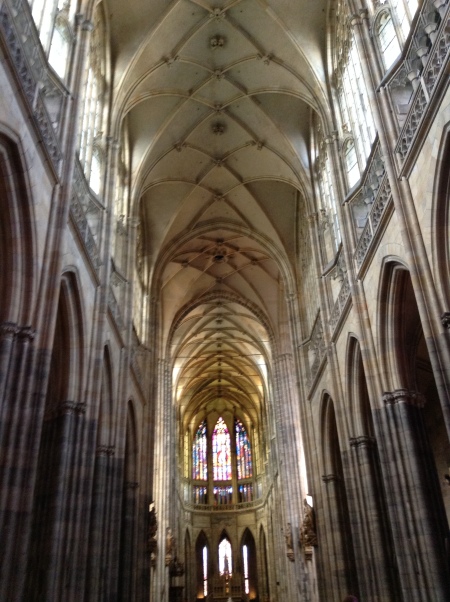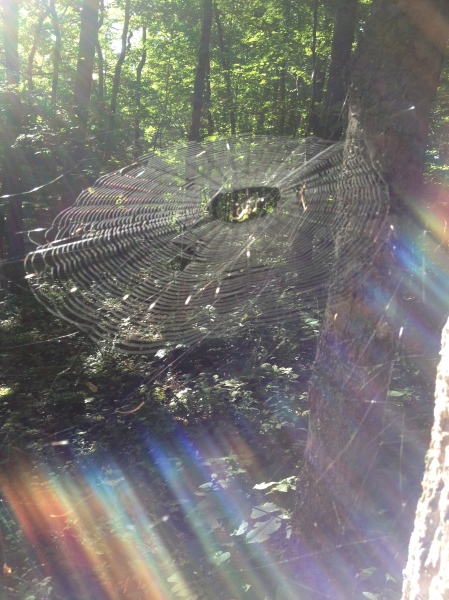This world is a wonderful place, but it’s also a terrible place. We are not in agreement here about a lot of things. The human family is all torn up as a result of our disagreements. So what else is new.
Well here’s something new for me, but it’s actually a reshaped experience of an old conundrum.
It started yesterday when my wife and daughter I, who are presently on the big island of Hawaii, took a drive in the rental car up onto the slopes of Mauna Kea volcano.
It was a large experience: there we went crawling, in a mid-sized automobile as any tourist would do, up the slope of this massive hunk of hardened magma, which had piled up 32,000 feet from the Pacific Ocean floor, to a peak 13,796 feet above sea level.
We didn’t go all the way to the top, because having no 4WD limited our ascent. Of course, as tourists, we wouldn’t be taking the time to hike the rest of the way to up, so we satisfied ourselves with what was available at the Visitors’ Center, as most “visitors” or tourists probably do.
We arrived at this little outpost/equipment store/educational display that is the the Visitor’s Center, and bailed out of the car to have a look around. It’s at about 9300 ft. above sea level. With some disappointment at not having reached the summit, I decided, as most tourists who stop here do, to check out the what was inside the small building.
I learned a lot up here, three quarters of the way up Mauna Kea. There were two information sources:
~the instructional video about the Mauna Kea volcano itself, its history, and the scientific station up on top with very high-tech telescopes.
~the vigilant We Are Mauna Kea representatives, across the road, who were protesting further developments on the summit.
The video inside was very impressive, and informative. You can probably find it online somewhere. For my purposes here, I’ll say merely that the big picture for the scientists seems to be exploring, visually through super-telescopes and scientifically through electromagnetic data collection, the outer regions of our solar system and beyond. I can appreciate this, find it interesting, but its pretty much beyond my down-to-earth curiosities.
The protesters across the road had set up a small Hale, a special shelter made of stones and leafy coverings. At its entrance was a stylized artistic rendering of Queen Liliuokalani with her fist raised high in the air. This was interesting to me. Having developed an interest in Hawaii’s last reigning monarch, I had read her biography during a previous trip to Oahu. Queen Liliuokalani’s life was so interesting to me that I had included parts of her story in my 2007 novel, Glass half-Full. But I always thought of her very regally, as a queen, not typically standing with her fist in the air. But that’s the position in which she was depicted at this protest site.

A cheerful, young woman there explained to me that they especially want to prevent construction of a newly proposed 18-story high observatory. She handed me a printed page which was quite professional-looking and concise, with an explanation of their We Are Mauna Kea objectives. My reading of it later unearthed another objection of theirs– the disruption/excavation of 8 acres and 64,000 cubic yards of public lands. The basis of their protest is stated with several points listed. The first one is:
Mauna Kea is a Wao Akua, a holy realm, a sacred piko.
About an hour later, as we departed that place of instruction and confliction, my heart and mind were disagreeing with each other about the controversy between these two camps of human beings– the Sacred Place Savers who were protesting, and the Knowledge Gatherers who were erecting tall telescopes in order to learn more about the expanding universe.
This is a little bit like the ancient dilemma of mankind: choosing between the Tree of Life or the Tree of Knowledge.
Who is to say what place is sacred?
Who is to say what place is useful?
The protesters’ plaintive objections reminded me of a song I wrote and recorded many years ago. It’s a tuneful lament that touches on this great divide between two different people groups of mankind:
Sitting Bull’s Eyes
I wrote the song In 1978, which was about the same my time my life fell apart in a big way, and I turned to the Creator of the Universe for some help. I then returned to the faith of my fathers and mothers, which is Christ.
As my walk with the Lord through this life has progressed for lo, these many years since that time, I have from time to time studied the sacred places and beliefs of different people. In human history, we can find thousands of incidents of one trive desecrating the sacred places and beliefs of another tribe, or one religion destroying the sacred places of another religion. Rather than trying to cite them all, I’ll just mention one particular example, which is the one I know the most about.
In the history of my own faith heritage, for instance, I find:
~Babylonian king Nebuchadnezzar desecrated the Jewish temple in Jerusalem
~Seleucid conquerer Antiochus Epiphanes desecrated that same temple
~Titus the Roman general/emperor destroyed that temple
~Muslims later occupied the sacred mountain in Jerusalem where the temple had stood
~Christians took that site from the Muslims
~Muslims took it back
~In 1967, the Jewish people regained possession of their sacred temple mount in Jerusalem. But being sensitive to potential destructive forces of politics and religion, they wisely decided to maintain the Muslim ascendancy that had fallen upon that holy place, leaving their own people, the Jews, to pray at the sacred wall beneath.
~Here’s my spiritual attachment to that sacred site in Jerusalem. It started with a man named Paul in the first century AD. He was Jewish, but had a new vision, based on the work of Jesus the Christ. Paul was the primary expositor of the Christian faith (which I later accepted as my own). He traveled all around present-day Lebanon, Turkey, Macedonia, Greece and Rome preaching that the truly sacred place of the most High God is found not in the temples erected by men, but in the souls of men and women who believe in Jesus the Christ.
Sacred is not found in a place or thing, but in the hearts of men and women who believe, and act in accordance with their faith.
So from my Christian perspective, or perhaps any other person whose values were influenced by being raised in the post-Christian Western culture, who cares about whether a place is sacred or not?
Well, there is a very important attribute of human relationships that I have come to admire when I see it in people: Respect.
Respect for others, and for their traditions. Respect others as you would want to be respected.
Meanwhile, in the middle of the Pacific Ocean, Hawaiians of ancient heritage strive without success to prevent the high-tech wizards of our modern age from desecrating their sacred place. Who is going to win out here?
I think you know who will prevail in this Mauna Kea situation. It seems it has always been this way. The strong throw their weight around like bulls in a china shop and destroy all that is holy and sacred of what remains among the indigenous and weakened peoples.
Has it always been this way?
Yes. This is the history of the world as we know it.
Will it always be this way?
Who knows? Not me. But a wise Teacher wrote long ago:
“I again saw under the sun that the race is not to the swift and the battle is not to the warriors, and neither is bread to the wise nor wealth to the discerning nor favor to men of ability; for time and chance overtake them all.”
We shall see about that.
And the greatest Teacher of all said: “Blessed are the peacemakers.”
But who is a peacemaker anyway? Is it a person who lives peacefully. . . or a person who shuts down troublemakers by imposing peace on their violent schemes?
Whatever your answer to that question is, please consider this: Take it upon yourself as a sacred duty to do the best you can to respect others, and to obtain respect for those who are unable to retain it.
Glass half-Full















